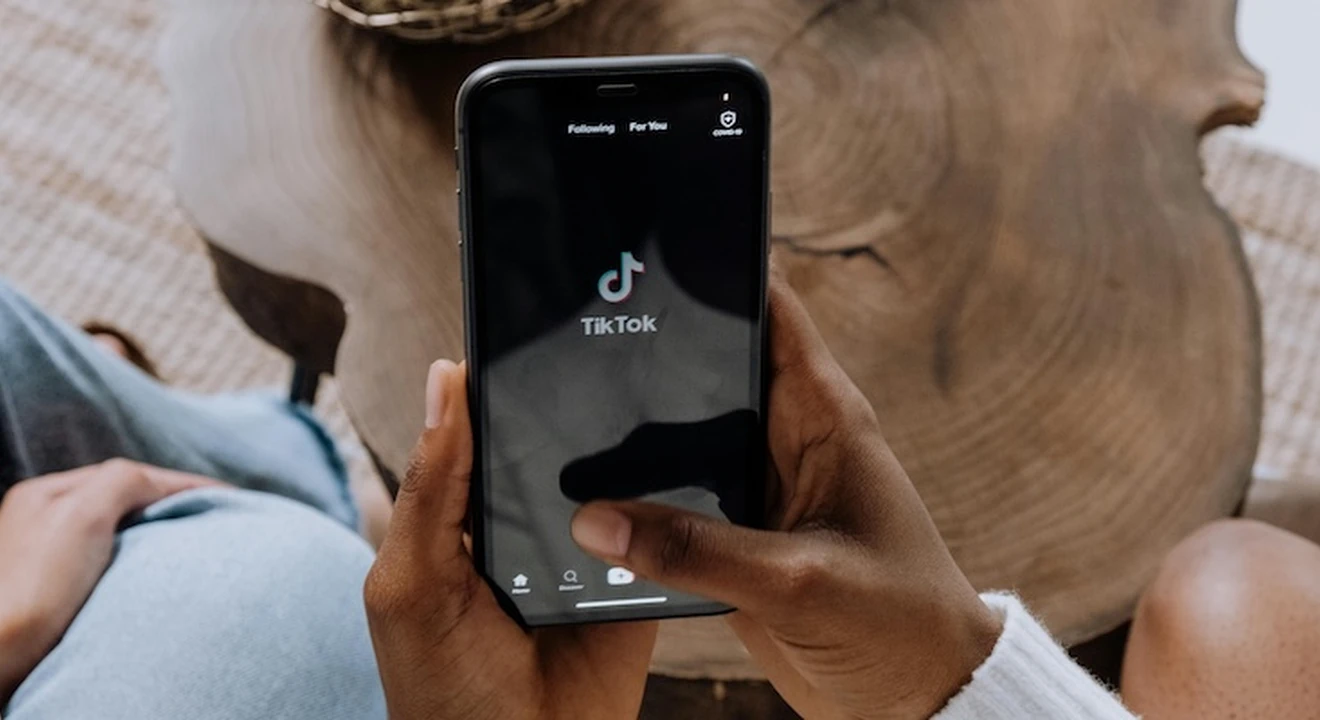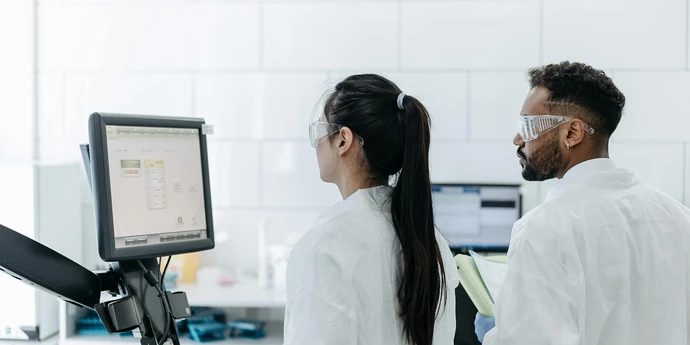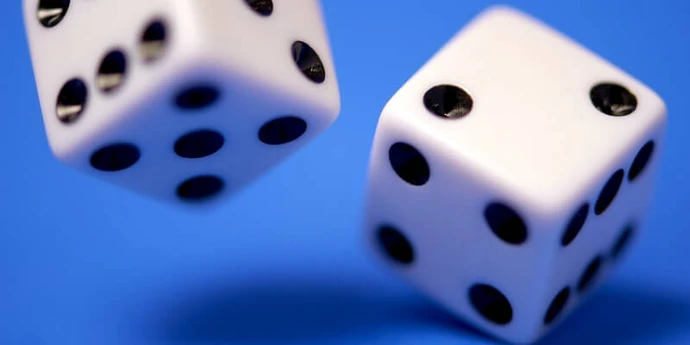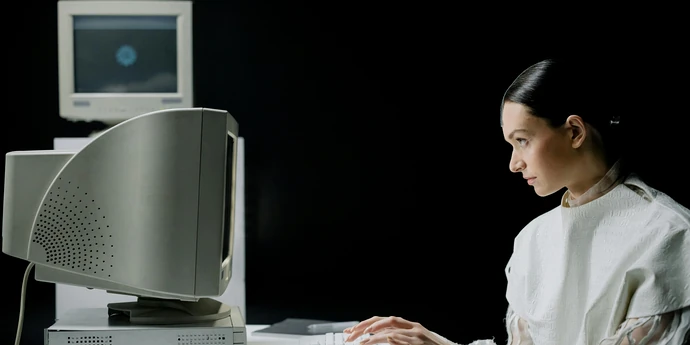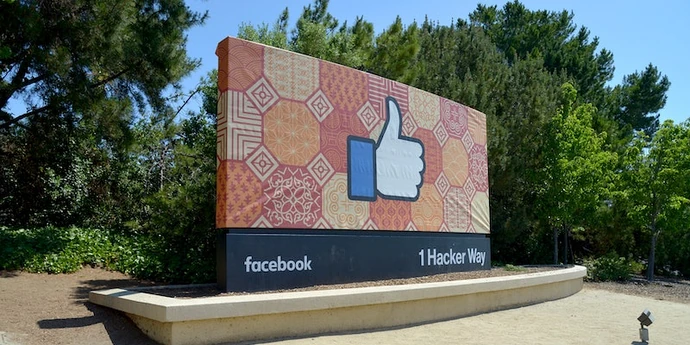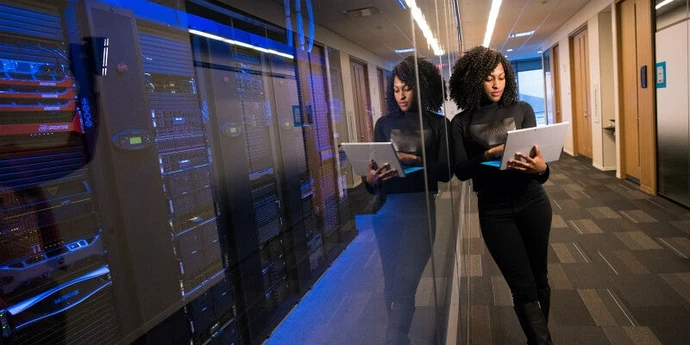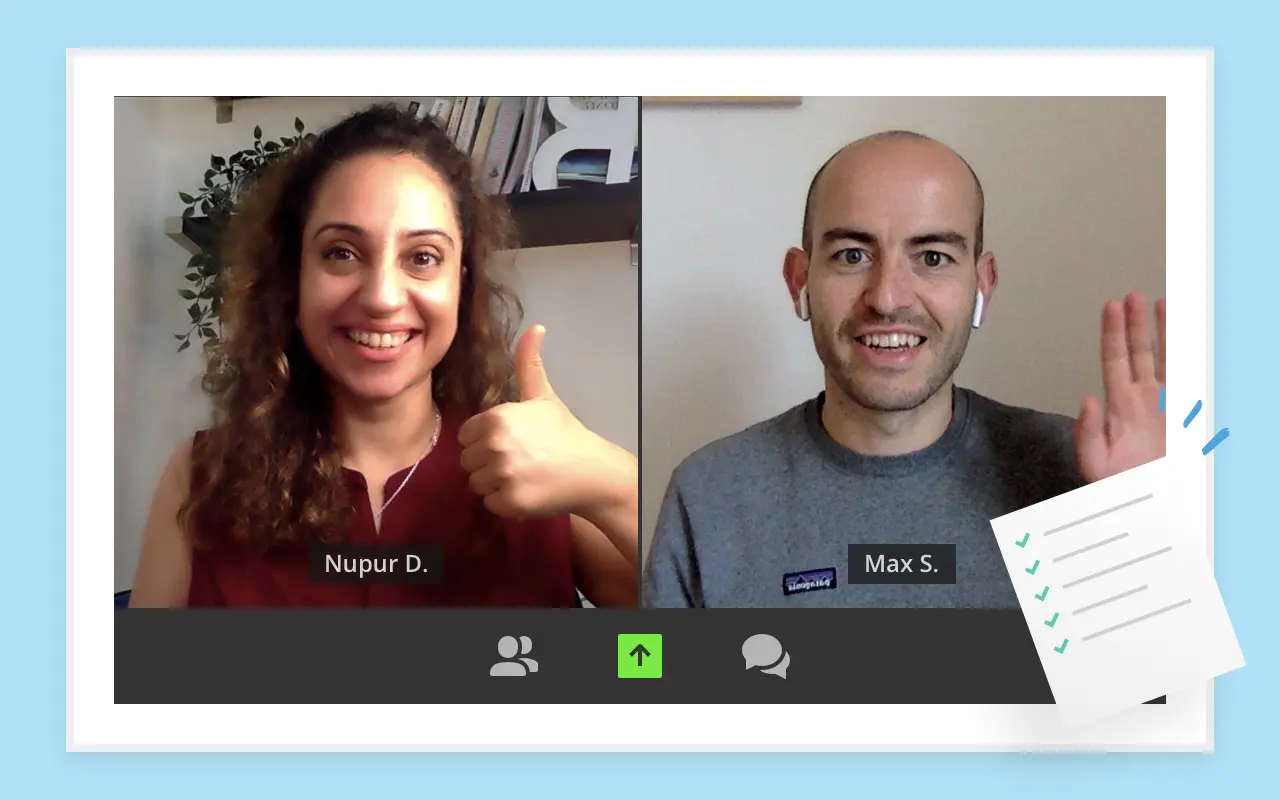Data scientist (DS) interviews at TikTok can be tough to crack. The platform has grown into one of the world’s leading short-form video apps, yet its interview process remains a gray area for many candidates.
That’s why we’ve reviewed over 100 interview reports and insider insights posted on forums like Glassdoor, Blind, and Reddit to put together this complete guide to TikTok’s data scientist interviews.
We’ll break down the hiring process, cover the most commonly asked questions, and share tips to help you move through each round with confidence.
- Role and salary
- Interview process and timeline
- Example interview questions
- Interviewing tips
- Preparation plan
Click here to practice 1-on-1 with ex-data scientist interviewers
Let’s get started!
1. TikTok data scientist role and salary ↑
Before we cover your TikTok data scientist interviews, let’s take a quick look at the company and the role itself.
TikTok is a video-sharing app owned by ByteDance, a global tech company based in Beijing and incorporated in the Cayman Islands. ByteDance launched TikTok for international markets and later merged it with Musical.ly in 2018 to expand its global reach.
ByteDance also owns Douyin, the Chinese version of TikTok, and Toutiao, a news and information content platform with a content recommendation engine.
1.1 What does a TikTok data scientist do?
Data scientists at TikTok are responsible for analyzing, processing, and interpreting large data sets to inform decisions around product development, content strategy, and overall business decisions.
As a TikTok data scientist, you’ll work with cross-functional teams to define success metrics, run A/B tests, and analyze user behavior to inform product decisions.
TikTok data scientists are spread across a wide range of product lines and business functions. This includes Local Services, Business Product Data Science, Trust & Safety, Global eCommerce, Applied AI, Ads Interfaces, Brand Innovation, Data Solutions, and many more.
Some roles focus more on applied machine learning, such as building models to detect anomalies, personalize the feed, or recommend content. Others support platform integrity, ad performance, or marketplace quality, depending on the business unit.
Regardless of your assignment, the core responsibility of a TikTok data scientist remains the same: using data to improve outcomes and shape product strategy across TikTok.
What skills are required to be a TikTok data scientist?
An analysis of recent job postings for TikTok data scientists shows that while requirements vary by team, most roles expect a strong technical foundation, analytical rigor, and the ability to drive product impact through data.
At minimum, you'll need a bachelor’s degree in mathematics, statistics, computer science, or a related field. Some roles may require candidates with advanced degrees, such as a master’s degree or a PhD.
You should also have hands-on experience in SQL, Python, or R. Many roles also require expertise in experimentation, modeling, or optimization.
TikTok is looking for data scientists with exceptional communication skills who can collaborate effectively with engineers, product managers, and other cross-functional partners. Candidates who are proactive, impact-driven, and comfortable in a fast-paced environment tend to thrive in this role.
1.2 How much does a TikTok data scientist make?
Before we dive into salary data for TikTok data scientists, let’s first take a look at the level you’re applying for.
Individual contributor levels for data scientists at TikTok start at 1-2 and go up to 4-2. We’ve also included their approximate equivalents based on the standard L1–L6 framework used by other tech companies:
- 1-2 (L3/IC3) – Entry-level data scientist
- 2-1 (L4/IC4) – Mid-level data scientist
- 2-2 (L3/IC5) – Senior data scientist
- 3-1 (L4/IC6) – Staff data scientist
- 3-2 / 4-1 (L5/IC7) – Senior staff data scientist
- 4-2 (L6/IC8) – Principal data scientist
Now, let’s take a look at compensation.
Based on Glassdoor data, the average total pay for a TikTok data scientist is $225k/year, which is 49% higher than the estimated average total for a data scientist in the US at $151,171/year.
Below, you can see the average salary and compensation of the different data scientist levels at ByteDance (since there are no levels data for TikTok at the time of writing), as of July 2025, based on Levels.fyi.
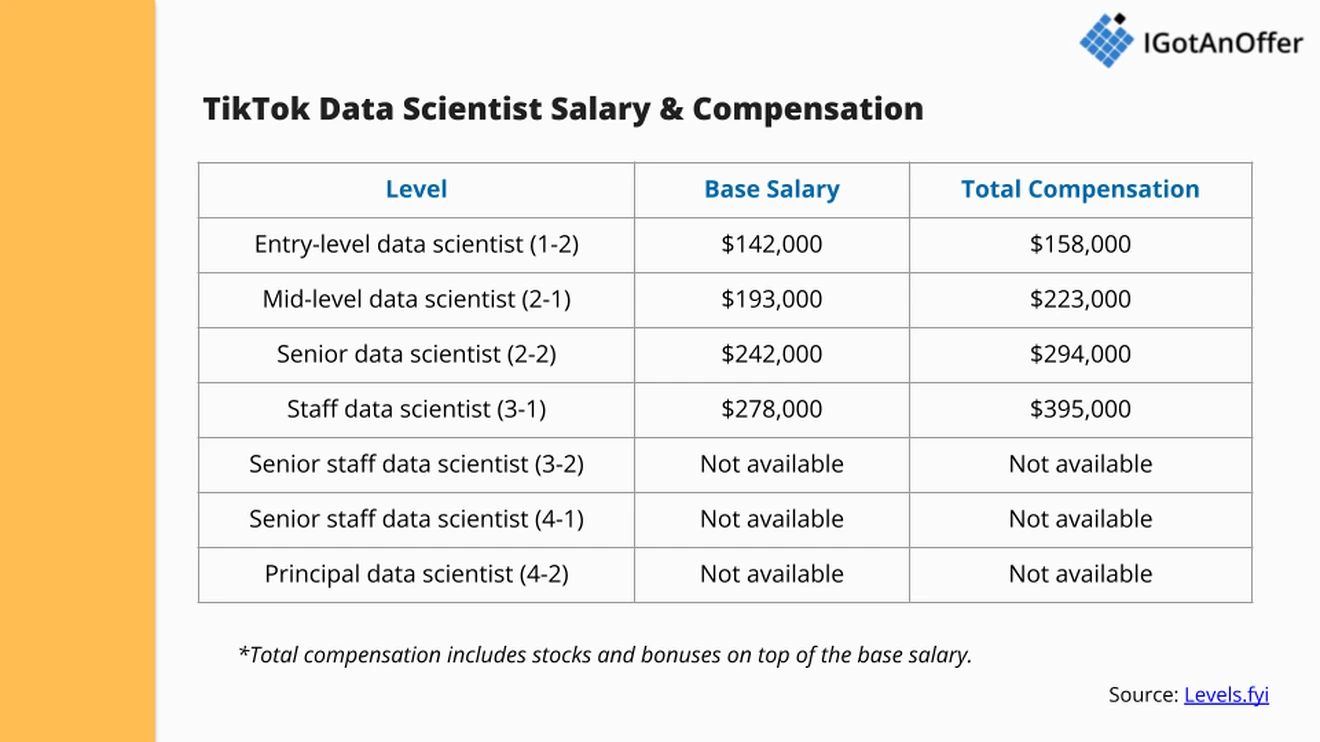
Where you’re located will impact your salary, too. TikTok has 10 offices and over 10,000 employees worldwide, with two in the United States (Los Angeles and New York) and the rest spread across Europe, the Middle East, and Asia.
Ultimately, how you do in your interviews will help determine your offer. That’s why hiring one of our ex-TikTok interview coaches can provide such a significant return on investment.
And remember, compensation packages are always negotiable, even at TikTok. So, if you do get an offer, don’t be afraid to ask for more.
If you need help negotiating, consider booking one of our salary negotiation coaches to get expert advice.
2. TikTok data scientist process and timeline↑
What's the TikTok interview process and timeline for the data scientist role? It typically takes 2 weeks, but can stretch up to 3 months, and follows these steps:
- Resume screen
- Recruiter phone screen (30-45 min)
- Hiring manager phone screen (45-60 min)
- On-site interviews (2-5 interviews x 45-60 min each)
- Final HR interview (1 round, 45-60 min)
TikTok’s interview process is slightly different from other major tech companies like Meta, Amazon, or Google.
Firstly, each of TikTok’s interview rounds is eliminatory, meaning that you have to pass each round to move on to the next. At other companies, you may be able to make up for one “just ok” round with a stellar performance at the others, but at TikTok, you’ll need to ace every interview to continue.
Additionally, TikTok conducts a final HR interview after the onsite as part of its standard process. At other companies, once candidates pass the onsite rounds, they typically move straight into team matching or the offer stage.
Finally, one or multiple rounds may take place with a member of the team in China. This means that you’ll have to be flexible with your schedule to accommodate a Chinese time zone, and your interviewer may not be a native English speaker.
Now, let’s get into each step of the TikTok data scientist interview process. There is some variation in past candidates’ experiences, so we’ll cover the most frequently mentioned steps that have been reported on Glassdoor, Blind, and Reddit.
2.1 Resume screen
First, recruiters will look at your resume and assess if your experience matches the open position. This is the most competitive step in the process, as millions of candidates do not make it past this stage.
If you've yet to write your resume or need help polishing your current one, check out our data science resume guide and tech resume guide for relevant tips and examples of successful resumes.
And if you’re looking for expert feedback, you can also get input from our team of ex-FAANG+ recruiters, who will cover what achievements to focus on (or ignore), how to fine-tune your bullet points, and more.
2.2 Recruiter screen
Next, you'll start your interview process with a phone call from an HR recruiter or hiring manager. This will be a discussion of your background as well as the interviews ahead of you.
Prepare to answer typical behavioral and resume questions like "Tell me about yourself," "Why TikTok?" or "Tell me about a project you’ve worked on."
This would also be a good time to ask for any clarifying information you need to know for the interviews moving forward. The recruiter will be your point person for the rest of the process.
Some candidates on Blind report going directly to the initial screen after submitting their application. In this case, the initial screen will include a few background questions that would otherwise have been asked in the recruiter call.
2.3 Initial screen
The next step is a focused 45- to 60-minute video call, usually with a hiring manager or senior team member over Lark. For those referred internally or contacted directly by a recruiter, this may serve as your first interview.
The initial screen typically includes a mix of behavioral and technical questions. You’ll be asked to walk through your resume, discuss past projects, and explain why you’re interested in the role.
Some candidates report receiving product or business case-style questions, such as “How would you evaluate X product or feature?”.
You may also get short coding questions, typically a LeetCode medium to hard-level SQL or Python problem involving joins, aggregations, or window functions. These are usually held on HackerRank, but interviewers typically provide their own questions rather than using ones from the platform’s library.
If you pass this round, you’ll move on to the next stage of the process: the "onsite" interviews.
2.4 “Onsite” interviews
TikTok’s “onsite” interviews are completely virtual. After the hiring manager screen, you’ll have two to five interviews over Lark with a mix of TikTok data scientists, engineers, and hiring managers over Lark.
Some of these may be conducted by team members based in China. This means the interview could be scheduled outside of normal U.S. hours. In some cases, the interview may be conducted entirely in Chinese, typically for native speakers.
While this is more common for Asia-based roles, some candidates on Reddit have reported similar experiences even when applying for US-based positions.
You can expect these interviews to have the rigor of onsite interview rounds at other big tech companies, even though they’ll be happening progressively, with hours or days between each round.
As we mentioned before, each round is eliminatory, so you’ll need to pass one interview to proceed to the next.
Based on our analysis of Glassdoor reports, the types of questions asked can vary significantly depending on the specific role you’re applying for, but generally, you can expect a combination of the following question types:
- Behavioral
- Product questions
- Technical questions
- Case study
- Research and experimentation
- Machine learning
- Statistics
- Data quality and governance
We’ll dig deeper into each one later in the article, but generally, expect a higher level of difficulty than the questions presented during the initial screen.
2.5 Final HR interview
Finally, if you pass each of the previous interviews, you’ll be scheduled for one last interview with TikTok’s HR team.
If you make it to this round, it is very likely that you will receive an offer, although there are rare cases of candidates getting rejected after completing this interview.
You will be asked a few more behavioral questions to test your cultural fit with TikTok, as well as what you expect out of the role. They may ask for feedback on the previous interview rounds, as well as your salary expectations.
After this interview is finished, all you have to do is wait until you (hopefully) receive your offer. If you need help negotiating your offer, you might want to book a session with our salary negotiation coaches.
3. TikTok data scientist example questions ↑
Let’s get into the eight primary categories of questions you’ll answer during the TikTok data science interview.
Based on our analysis of 100+ Glassdoor reports, here are the question types and how frequently each topic gets asked:
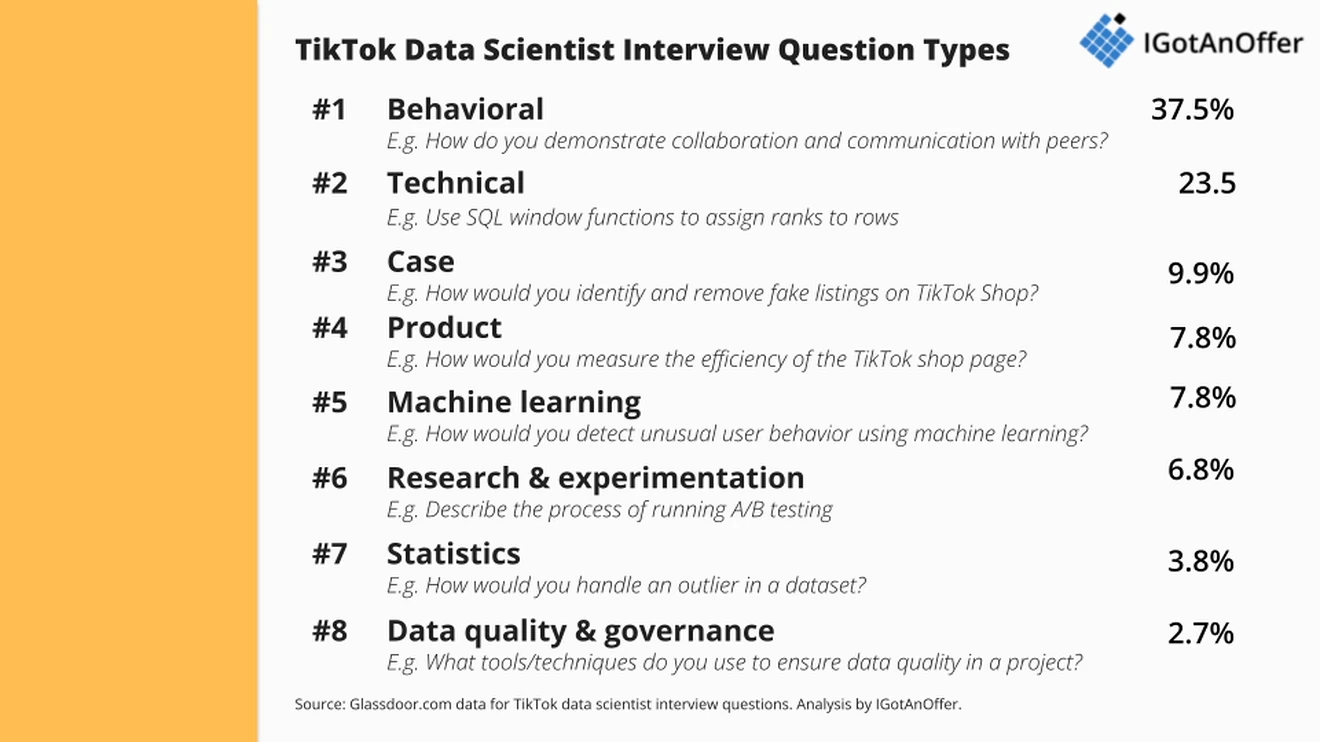
- Behavioral: 37.5%
- Technical questions: 23.5%
- Case: 9.9%
- Product: 7.8%
- Machine learning: 7.8%
- Research and experimentation: 6.8%
- Statistics: 3.8%
- Data quality and governance: 2.7%
In the sections below, we've put together a list of TikTok data scientist interview questions, according to data from Glassdoor. Note that some questions have been edited for clarity or grammar.
Important Note: As mentioned in Section 1.1, TikTok data scientists work across many divisions. Since responsibilities vary by role, the interview questions will too. The Glassdoor data we’ve used is generalized across all data scientist roles, so consult your recruiter to know what areas will be the most important for your position.
3.1 Behavioral questions (37.5%) ↑
A significant portion of the TikTok data scientist interview is made up of behavioral questions. These are meant to reveal how you’ve worked with others, responded to challenges, and made decisions in past roles.
Because data scientists at TikTok operate in fast-paced, cross-functional environments, interviewers are looking for evidence that you can communicate clearly, navigate ambiguity, and take ownership of your work.
Come prepared with a list of stories from your past experience that you can use to answer questions such as the ones below.
TikTok data scientist interview questions: behavioral
- Why TikTok? (See sample answer from Amazon interviews.)
- Why are you looking for a new job?
- What is a project that you are proud of?
- What are some of the challenges you've faced?
- Tell me about a recent project you worked on
- Tell me about your analytics experience
- Describe an experience that you consider most valuable
- How do you facilitate collaboration and communication with other team members?
For more practice, we also recommend using our list of 16 most-asked behavioral interview questions, which includes tips and sample answers.
3.2 Technical questions (23.5%) ↑
TikTok data scientists work with some of the largest data sets in the world. Therefore, you’ll be expected to have strong coding and data problem-solving skills.
Most technical questions are focused on SQL. You won’t be tested on SQL fluency alone (unless stated in the job description), but rather on your ability to structure, explain, and write an executable solution to a real-world problem.
You may also be assessed on your Python skills, particularly using libraries like pandas or numpy to manipulate data and implement basic logic or optimizations.
In addition to SQL and Python, some candidates report getting data structures and algorithms (DSA) questions. These are less common but still show up in some interviews. They’re typically LeetCode medium to hard level and are solved on HackerRank.
Example TikTok data scientist interview questions: technical
SQL
- Use LAG() and LEAD() to solve a window function problem (Solution)
- Use SQL window functions to assign ranks to rows (Solution)
- Write a query to manipulate and transform data based on a given dataset
- Write a SQL query to calculate video watch time (Solution)
- Write a query to calculate click-through rate (CTR) as a percentage (Solution)
- Write a query to find active users from a user activity table
- Write a SQL command to extract dates from a database (Solution)
- Write a SQL query that returns the average number of visits over the past 30 days
- Write a query to retrieve the top N salaries for each department (Solution)
- Given example data, write a SQL query to return the output in a specified format
- Given user sign-up and confirmation tables, write a query to find users who did not confirm on Day 1 but did confirm on Day 2 (Solution)
Python Scripting
- Build a complex SQL query, then replicate the logic using Python
- Write a Python class that supports basic get, add, and delete operations
DSA
- Given a list of strings, write an algorithm to find whether any two strings differ at exactly one index. Optimize your code based on constraints.
Check out our coding interview questions list (with samples for Python, Java, C++, SQL, and more) to learn more.
3.3 Case questions (9.9%) ↑
TikTok data scientists play an important role in shaping product direction, platform integrity, and user experience. So expect interviewers to assess your ability to approach business problems and apply data to inform product decisions.
You’ll be asked to work through open-ended scenarios drawn from actual challenges the company faces. Interviewers want to see how you define problems, structure your approach, and use data to generate actionable recommendations.
Be ready to explain your reasoning clearly, as interviewers will want to understand your thought process from start to finish. TikTok values decisions that are backed by evidence, so be sure to support your recommendations with data whenever possible.
Example TikTok data scientist interview questions: case questions
- How would you identify and remove fake listings on TikTok Shop?
- How would you detect issues and improve the diversity of the TikTok Live ecosystem?
- How would you improve the "For You" feed to boost user experience and engagement?
For more information, take a look at our guides on data science case study interviews and product improvement interview questions. They include answer frameworks and more sample cases to practice with.
3.4 Product questions (7.8%) ↑
Understanding how product features perform and where they can improve is a central part of the data scientist role at TikTok. Doing this well requires strong product intuition.
Product questions typically fall into two categories: product sense and product metrics and analytics.
Product sense questions test whether you understand what makes a feature valuable to users and how it supports TikTok’s broader strategy.
Product metrics and analytics questions focus on identifying trends, explaining shifts in performance, and using data to recommend next steps.
Example TikTok data scientist interview questions: product questions
Product sense
- What's your favorite app?
- Tell me two social media apps that you use daily, and tell me their differences
Product metrics and analytics
- What are the most important metrics to evaluate the success of TikTok?
- What’s the key metric of X app?
- How would you measure the efficiency of the TikTok Shop page?
- You are creating a dashboard for the TikTok Live team. What metrics would you show to your internal team, and what kind of data would you need to collect?
- How would you investigate a drop in a KPI?
- Describe one of your past projects. How would you investigate a metric movement?
- Why might DAU drop?
- What would you do if the Day 2 retention rate dropped by 50%?
- If GMV is no longer increasing, how would you analyze the root causes?
- How would Spotify measure penetration rates between France and Sweden?
- How would you identify "bad" users?
- How would you find the exact revenue of a specific industry?
- How would you acquire more users?
Check out our guide on how to crack product sense interviews and product metrics interviews for more information. While these resources are written for PMs, they offer valuable insights that apply to data scientist interviews as well.
3.5 Machine learning (7.8%) ↑
TikTok is always looking for ways to improve its algorithm, feed ranking system, and other ML-powered features. Interviewers will want to see that you have a strong grasp of ML concepts relevant to these products and can apply them to solve real-world problems.
Depending on the role, you may be asked to walk through an ML project you’ve worked on or discuss how to improve existing models used in TikTok's product ecosystem. This could include model design, evaluation methods, and trade-offs in production settings.
According to Glassdoor, some general topics that have come up in TikTok machine learning interviews include model evaluation, classification metrics, supervised vs. unsupervised learning, tree-based methods (e.g., XGBoost, GBDT, Random Forest), computer vision models like YOLO, and techniques for handling imbalanced datasets.
Let’s get into the complete list of questions.
Example TikTok data scientist interview questions: machine learning
- Walk us through a machine learning project you led end-to-end, including data preprocessing, model selection, and how you measured success
- How would you detect unusual or suspicious user behavior using machine learning?
- Can you explain how YOLO and F-RCNN work?
- What’s the difference between GBDT and XGBoost?
- How does Random Forest differ from XGBoost?
- What is the trade-off between a low and high learning rate?
- What does it mean for a model to be overfitting? How can you address it?
- What is precision, and what does it measure?
- What is recall?
- If precision is increasing but recall is also increasing, how would that affect the Precision-Recall curve?
- What are the disadvantages of undersampling in an imbalanced dataset? How would you address them?
- Why is an activation function needed in a neural network? What happens if you remove it?
3.6 Research and experimentation (6.8%) ↑
Once product goals are set, it’s up to data scientists to test assumptions and make sure the solutions actually deliver results.
Research and experimentation give data scientists the tools to validate hypotheses, interpret data accurately, and make informed product and business recommendations.
Here, interviewers want to know if you can establish cause-and-effect relationships, identify areas for improvement, and measure the impact of your work. Review concepts related to A/B testing and experiment design, including how to structure tests and interpret results.
Below, we’ve listed the research and experimentation questions that past candidates have reported on Glassdoor.
Example TikTok data scientist interview questions: research and experimentation
A/B testing
- Describe the process of running an A/B test
- Walk through A/B test concepts, such as alpha, beta, and how they relate to sample size
- With multiple experiments running at the same time, how do you tell if the result comes from a specific experiment?
Experiment design
- How would you design a test, and how would you determine the minimum required sample size?
- How would you design an experiment to increase the CPM of ads?
3.7 Statistics (3.8%) ↑
TikTok data scientists have to derive useful insights from large and complex datasets, which makes statistical analysis an important part of their daily work. Interviewers will look for you to demonstrate the strong statistical foundation needed in this role.
You should be prepared to explain key statistical concepts clearly, with a focus on applied statistics and probabilistic reasoning. Some general topics that have come up in past interviews include hypothesis testing, variance, regression, multicollinearity, and Bayes’ Theorem.
In addition to these topics, you’ll find complete questions to work through below.
Example TikTok data scientist interview questions: statistics
- What statistical method did you use for the analysis?
- What is Ordinary Least Squares (OLS), and how is it used?
- What is bi-variance?
- What is the problem with highly correlated features or multicollinearity?
- What is the effect of forcing the bias of a model to be zero?
- How would you handle an outlier in a dataset?
- Explain Bayes’ Theorem
- Explain the concept of variance and standard deviation. Why are they important?
3.8 Data quality and governance (2.7%) ↑
Even the most sophisticated analysis fails without reliable data. As a TikTok data scientist, you’ll be expected to maintain data quality and consistency while working with large, complex systems.
Practice answering questions around how you validate datasets, monitor for errors, and ensure compliance with internal standards and external regulations.
Let's get into the sample questions.
Example TikTok data scientist interview questions: data quality and governance
- What tools or techniques do you use to ensure data quality in a project?
- How do you identify and resolve data anomalies, outliers, or errors?
- What experience do you have with data governance, quality management, integrity, or cleansing?
- What metrics do you use to measure data quality in your projects?
- What do you consider best practices for documenting data quality issues and solutions?
- How do you ensure compliance with legal or regulatory requirements regarding data quality?
- Can you walk me through a recent project where you had to identify and mitigate data quality issues?
4. TikTok data scientist interviewing tips ↑
You might be a fantastic data scientist, but unfortunately, that won’t necessarily be enough to ace your interviews at TikTok. Interviewing is a skill in itself that you need to learn.
Let’s look at some key tips to make sure you approach your interviews in the right way.
4.1 Ask clarifying questions
Often, the questions you’ll get will be quite ambiguous. Make sure you ask questions that can help you clarify and understand the problem.
In its interview guide, TikTok encourages candidates to communicate their thinking openly and to ask for any information needed to solve the problem.
Be upfront if you encounter topics you have little experience with, but don’t give up on tackling them. TikTok isn’t just testing your technical skills but also your ability to deal with problems you’re not familiar with.
4.2 Treat the interview like a conversation
TikTok wants to know if you have excellent communication skills. So make sure you approach the interview like it's a conversation.
As you know by now, a few of your interviewers will be hiring managers, which means you’ll need to be able to communicate highly technical concepts in simple, accessible terms.
Be sure to practice communicating data in a way that’s clear and easy for everyone to understand.
4.3 Think out loud
You need to walk your interviewer through your thought process before you actually start coding or making recommendations. TikTok recommends that you talk while you work through a solution, as they want to know how you think. Your interviewer may also give you hints about whether you’re on the right track or not.
4.4 Back everything with data
TikTok’s culture relies heavily on data analysis and metrics to inform product development, marketing strategies, and overall business decisions.
Use metrics, past results, or examples from your experience to back up your recommendations whenever possible. Even in behavioral interviews, share examples where you used data to solve problems or achieve goals.
4.5 State and check assumptions
You need to explicitly state assumptions, explain why you’re making them, and check with your interviewer to see if those assumptions are reasonable.
In an interview setting, it's okay to make assumptions because you might not have access to the facts and data. But you need to make it clear that in real life, you would seek out that data and that your approach would be highly data-driven.
4.6 Present multiple possible solutions
Present multiple possible solutions if you can. TikTok wants to know your reasoning for choosing a certain solution. TikTok also wants to see how well you collaborate. So when solving problems, don’t hesitate to ask further questions and discuss your solutions with your interviewers.
Also, if you have a moonshot idea, go for it. TikTok likes candidates who think freely and dream big. So if the question allows it, try to find a way to display your creative and innovative thinking.
4.7 Demonstrate user empathy
TikTok wants data scientists who can empathize with its users.
When answering product or case-style questions, your first instinct should be to consider the user’s needs and behavior. Identify who the user is, what they’re trying to achieve, and how your analysis can improve their experience. Avoid designing solutions based solely on personal preferences.
As part of your prep, think hard about the different kinds of users across TikTok’s ecosystem and how their behavior might vary. Be ready to factor those differences into your analysis.
4.8 Keep your code organized
Make sure to keep your code organized so your interviewer won’t have a hard time understanding what you’ve written. TikTok wants to see that your code has captured the right logical structure. You should also familiarize yourself with coding in different environments, like HackerRank.
4.9 Answer methodically by using a framework
Like other tech companies, TikTok wants you to solve a problem methodically. You can use the STAR (Situation, Task, Action, Result) framework or SPSIL (Situation-Problem-Solution-Impact-Lessons) framework for answering behavioral questions.
For product sense questions, use the BUS (Business Objective, User Problems, Solutions) framework from our PM guide, which works just as well in data science interviews.
For case problems, the CAPER (Clarify-Assume-Plan-Execute-Review) framework can help you structure your thinking.
Finally, refer to our guide on answering coding interview questions to learn how to tackle technical questions systematically.
4.10 Don’t get stuck in a framework
As we just said above, frameworks are extremely helpful. However, some of our successful candidates have mentioned that excessive reliance on frameworks may hinder performance.
During the interview, trust your instinct, and don’t be afraid to deviate from the framework if needed. A framework is there to help you craft a better answer, not make you twist your answer to fit the framework.
5. Preparation plan ↑
Now that you know what questions to expect, let's focus on how to prepare. After all, the right preparation will make the difference between failing your TikTok interviews and getting an offer.
Below is our four-step prep plan for TikTok data scientist interviews. If you're preparing for more companies than just TikTok, then check our generic data science interview preparation guide.
5.1 Learn about TikTok’s culture and products
Most candidates fail to do this. But before investing tens of hours preparing for an interview at TikTok, you should take some time to make sure it's actually the right company for you.
TikTok is prestigious, and it's therefore tempting to assume that you should apply without considering things more carefully.
However, it's important to remember that prestige alone won't make you happy in your day-to-day work. What will make you happy is what you’ll actually be doing, as well as the people you'll be working with.
If you know data scientists who work at TikTok or used to work there, talk to them to understand what the culture is like.
In addition, we would recommend reading the following resources:
- TikTok’s mission statement (by TikTok)
- TikTok’s culture (by TikTok)
- TikTok’s newsroom (by TikTok)
- TikTok’s official blog (by TikTok)
- TikTok’s growing impact on culture and music (by TikTok)
- TikTok’s revenue and usage statistics (by Business of Apps)
- TikTok’s business model (by Business Model Toolbox)
- TikTok stats (by Viralyft)
5.2 Practice by yourself
As we’ve outlined in Section 3, you'll encounter eight main types of questions when preparing for TikTok data scientist interviews. In this article, we've recommended various deep-dive articles that will help you prepare for each question category.
Here's the complete list, plus a few other resources:
Behavioral: 16 most-asked behavioral interview questions
Technical (SQL/Python/DSA)
- How to get better at coding interviews
- Practice for 3 types of SQL interviews
- SQL Course
- Mode Analytics SQL Tutorials
- Programmer Interview SQL Practice Database
- Python | SQL Comparison
Case
Product
- How to crack product sense interviews
- How to crack product metric interviews
- How to crack product improvement interviews
- Favorite product interview question
Research and experimentation
Statistics and machine learning
- Brilliant.org’s online courses on statistical probability
- Khan Academy Statistics & Probability Course
- StackExchange for questions and answers around statistics, machine learning, data analysis, etc.
- Reddit’s statistics and machine learning threads to discuss questions with peers
Data quality and governance: 50 case studies exploring data governance and management
A great way to practice all of these different types of questions is to interview yourself out loud. This may sound strange, but it will significantly improve the way you communicate your answers during an interview.
Play the role of both the candidate and the interviewer, asking questions and answering them, just like two people would in an interview. Trust us, it works.
Practicing for a data science role at another company? Check out our other company-specific guides:
- Meta data scientist interview guide
- Google data scientist interview guide
- Amazon data scientist interview guide
- Amazon applied scientist interview guide
- Uber data scientist interview guide
Once you’re in command of the subject matter, you’ll want to practice answering questions. But by yourself, you can’t simulate thinking on your feet or the pressure of performing in front of a stranger. Plus, there are no unexpected follow-up questions and no feedback.
That’s why many candidates try to practice with friends or peers.
5.3 Practice with peers
Practicing by yourself will only take you so far. One of the main challenges of data scientist interviews at TikTok is communicating your different answers in a way that's easy to understand.
As a result, we strongly recommend practicing with a peer or a friend. Even better if you can find someone with the same background or who has interviewing experience.
However, be warned, as you may come up against the following problems:
- It’s hard to know if the feedback you get is accurate.
- They’re unlikely to have insider knowledge of interviews at your target company.
- On peer platforms, people often waste your time by not showing up.
For these reasons, many candidates skip peer mock interviews and go straight to mock interviews with an expert.
5.4 Practice with ex-interviewers
You should try to practice data science mock interviews with expert ex-interviewers, as they’ll be able to give you much more accurate feedback than friends and peers.
In our experience, practicing real interviews with experts who can give you company-specific feedback makes a huge difference.
Find a data scientist interview coach so you can:
- Test yourself under real interview conditions
- Get accurate feedback from a real expert
- Build your confidence
- Get company-specific insights
- Learn how to tell the right stories, better
- Save time by focusing your preparation
Landing a job at a big tech company often results in a $50,000 per year or more increase in total compensation. In our experience, three or four coaching sessions worth ~$500 make a significant difference in your ability to land the job. That’s an ROI of 100x!
Click here to book TikTok data scientist mock interviews with experienced interviewers.






